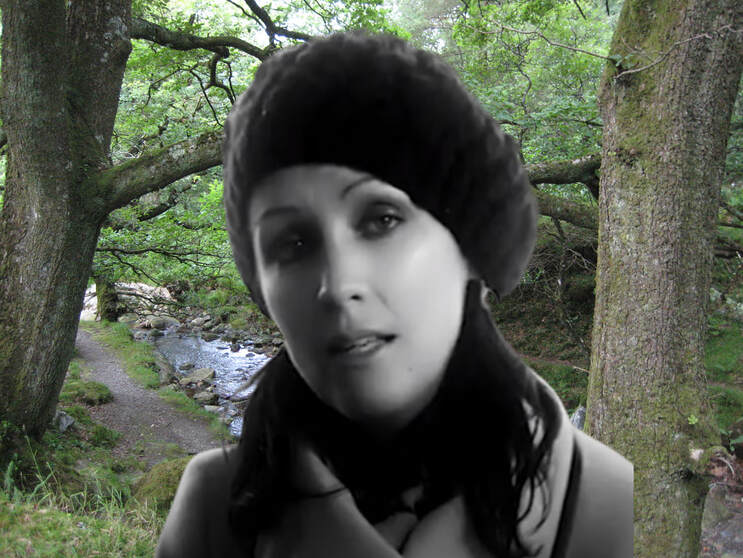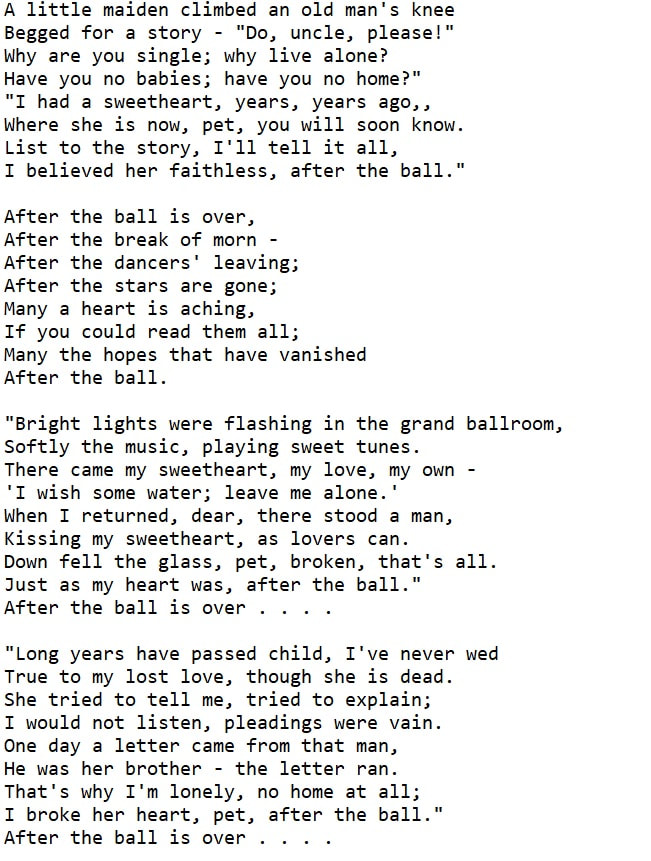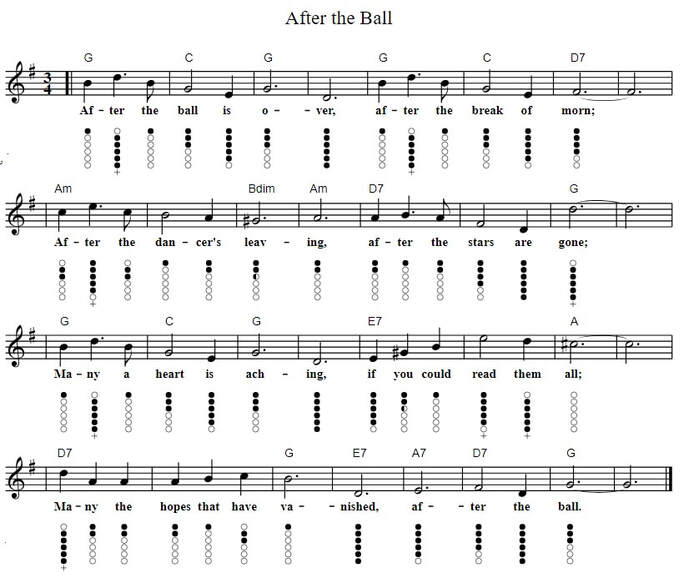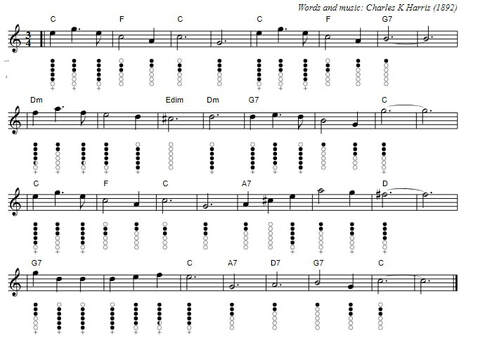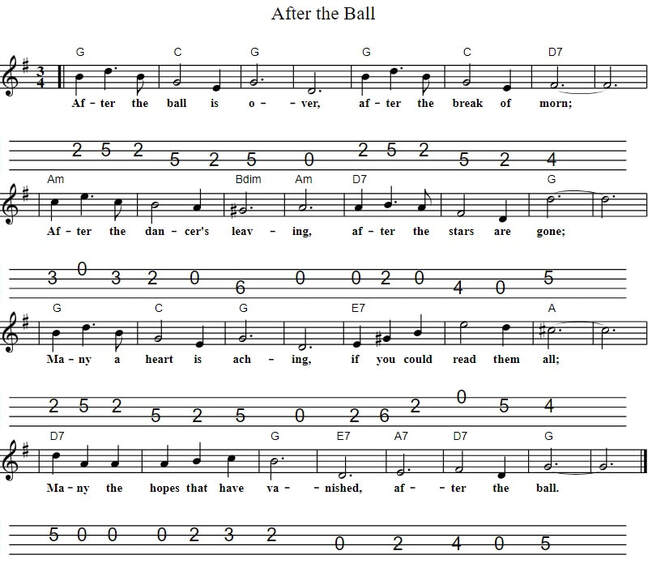After The Ball Is Over Lyrics And Guitar Chords
After the ball is over mandolin tab now added. The youtube video is by Foster And Allen. The ukulele chord shapes are included.Folk song- Written By Charles Harris, Francis Black done a fine version of this American song. Francis Black's biggest success is the Christie Hennessy's song All The Lies That You Told Me, I always assumed this was an Irish song, it has that feel to it. Also recorded by Foster And Allen. The guitar chords can be used to play the song on the mandolin. The music time signature is 3/4. The sheet music notes for tin whistle in the key of C are included. Most popular youtube videos are by Charles Harris, Foster And Allen, Rebecca Baxter and Irish female singers Catlin and Frances Black, in that order.
[G]A little maiden climbed an old man's[D7 knee
Begged for a story - "Do, uncle,[G] please!"
Why are you single;[E7] why live[Am] alone?
[C]Have you no[G] ba[E7]bies;[A7] have[D7] you no [C]home?"
"I[Em] had a sweetheart,[C] years,[D7] years a[C]go,,[G]
Where she is[G] now,[Em] pet,[A7] you will soon[C] know.
[G]List to the story,[E7] I'll tell it[Am] all,
I[C] believed her[G] faith[E7]less,[A7] after[D7] the[G] ball."
After the[C] ball is[G] over,
After the break of[D7] morn -
[Am]After the[E7] dancers'[Am] leaving;
[D7]After the stars are[G] gone;
Many a[C] heart is[G] aching,
If[E7] you could read them[A7 all;
[D7]Many the hopes that have[G] vanished
[A7]After[D7] the [G]ball.
"Bright lights were flashing in the grand ballroom,
Softly the music, playing sweet tunes.
There came my sweetheart, my love, my own -
'I wish some water; leave me alone.'
When I returned, dear, there stood a man,
Kissing my sweetheart, as lovers can.
Down fell the glass, pet, broken, that's all.
Just as my heart was, after the ball."
After the ball is over . . . .
After the ball is over,
After the break of morn -
After the dancers' leaving;
After the stars are gone;
Many a heart is aching,
If you could read them all;
Many the hopes that have vanished
After the ball.
"Long years have passed child, I've never wed
True to my lost love, though she is dead.
She tried to tell me, tried to explain;
I would not listen, pleadings were vain.
One day a letter came from that man,
He was her brother - the letter ran.
That's why I'm lonely, no home at all;
I broke her heart, pet, after the ball."
After the ball is over . . . .
After the ball is over,
After the break of morn -
After the dancers' leaving;
After the stars are gone;
Many a heart is aching,
If you could read them all;
Many the hopes that have vanished
After the ball.
After the ball is over tin whistle sheet music in the key of G Major and to be played using your D tuned whistle. The version in C Major below is in the key of C and also to be played on you D whistle.After the ball is over mandolin tab is also included.

